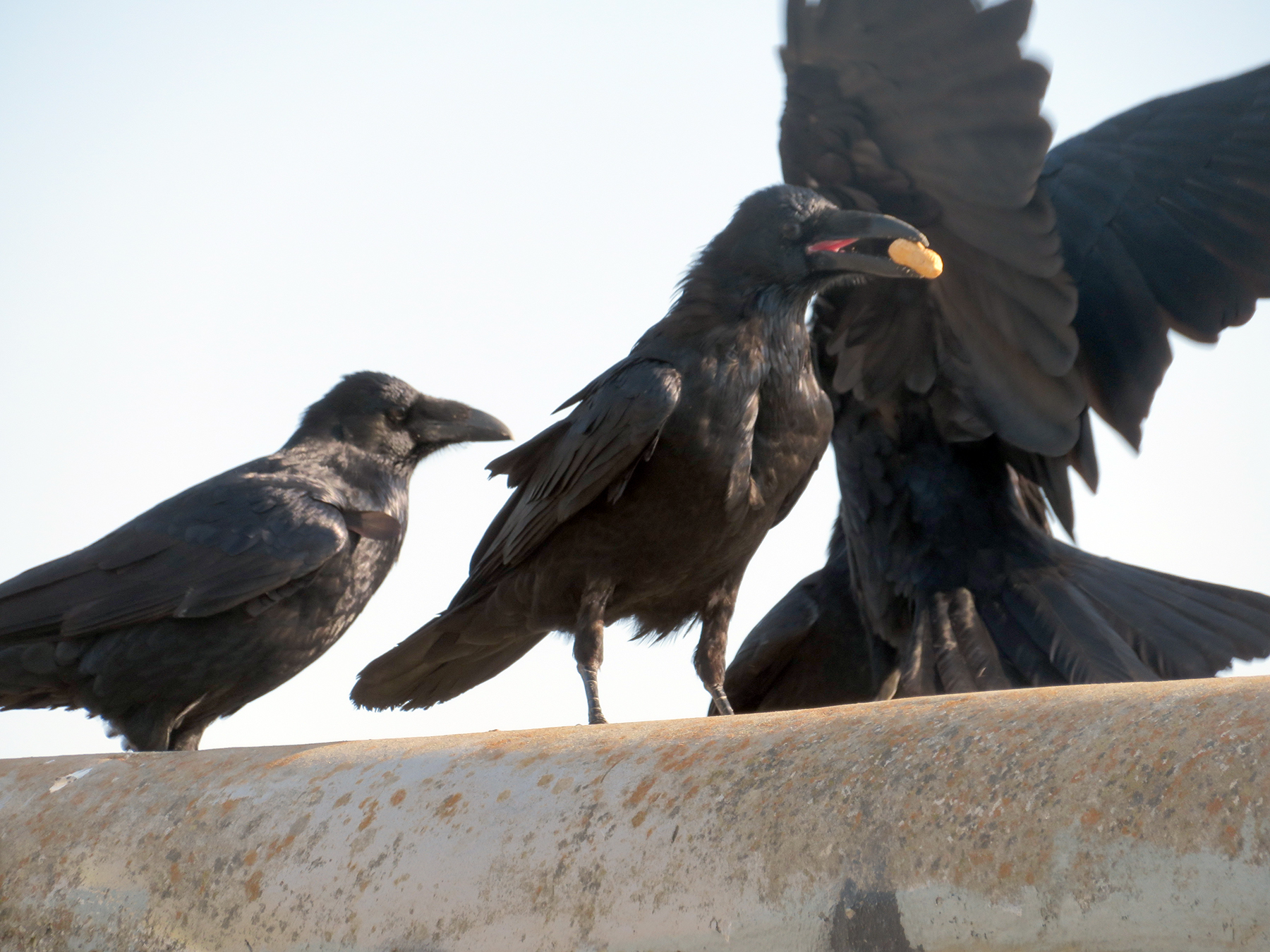I have written about crows before, describing my fascination with and admiration for corvids.
New research results have the birds back on my mind, as did observing their antics during a short walk on the beach when the air cleared.

The newest neurobiological evidence claims that crows have a kind of consciousness previously believed to only exists in humans and macaque monkeys. Should we trust those claims? They are based on the the fact that the 1.5 billion neurons in a crow’s brain are architecturally arranged in similar ways as are our’s, and that they seem to fire in a similar manner to our’s when we consciously experience something or relate that we are experiencing something.

I am always weary of the “if it looks like a duck and it quacks like a duck, it must be a duck!” kind of arguments pursuing the quest to find ourselves in other forms of life. To equate forms of neuronal reactions to our human consciousness is a huge step; I would be much happier if people cautiously formulated that along a continuum of reacting to a stimulus directly on one end to having thoughts about one’s reaction, or being aware of one’s thoughts on the other end of the scale, some biological entities approach us more closely than others, but all in degrees.

There is no question that corvids are extremely smart, but why insist that their experience is the same as ours, when you are a scientist? Let’s leave that to the poets. And none has done a better job of pursuing crows as conscious, questing heroes than Ted Hughes in his book Crow, From the Life and Songs of a Crow (1970.) Recovering from the loss of his wife through suicide, he responded to the American artist Leonard Baskin’s request to write a collection that would complement Baskin’s crow-focussed artwork.
Crow, born from a nightmare in the story, is an ultimately inadequate hero on a quest. Lots of mythological and folkloric tidbits are woven into the narrative, and this little hero is very much like a traditional trickster, challenging, funny, amoral, sometimes destructive and always sharp.


Here is one of Hughes’ poems that fits perfectly with my recent observations of crows (and brought home how many birds I am sorely missing) at the edge of the ocean:


Aware of their thoughts or not, they sure know how to survive, and seem to have fun while at it. My kind of model!
Music today was inspired by Hughes’ book – the piece by Benjamin Dwyer is called Crow’s Vanity. For a bit more cheerful enjoyment let’s have Charlie Parker guide us into the weekend with Ornithology.







Steve T.
NW Native American: There was the white raven, who brought all creatures into this world. His brother was black, and he sought to destroy his white brother’s accomplishments. For example, the white raven decided that the forest needed a creature who would listen to everyone’s tribulations. He made a creature with very large and sensitive ears, and just as he was breathing life into it the black raven lept out of the bushes and screamed. The new creature, frightened, bolted into the forest. That is why the deer is so shy.
The white raven was asleep, and the black raven lept upon his body screaming. The white raven was so scared he defended himself with a knife, killing the black raven. The black raven’s blood spurted onto the white raven, and the white raven’s feathers turned black. Now the white raven was both creator and destroyer. The next creature the white raven created was mankind. This why humans have both the good and the bad in them.